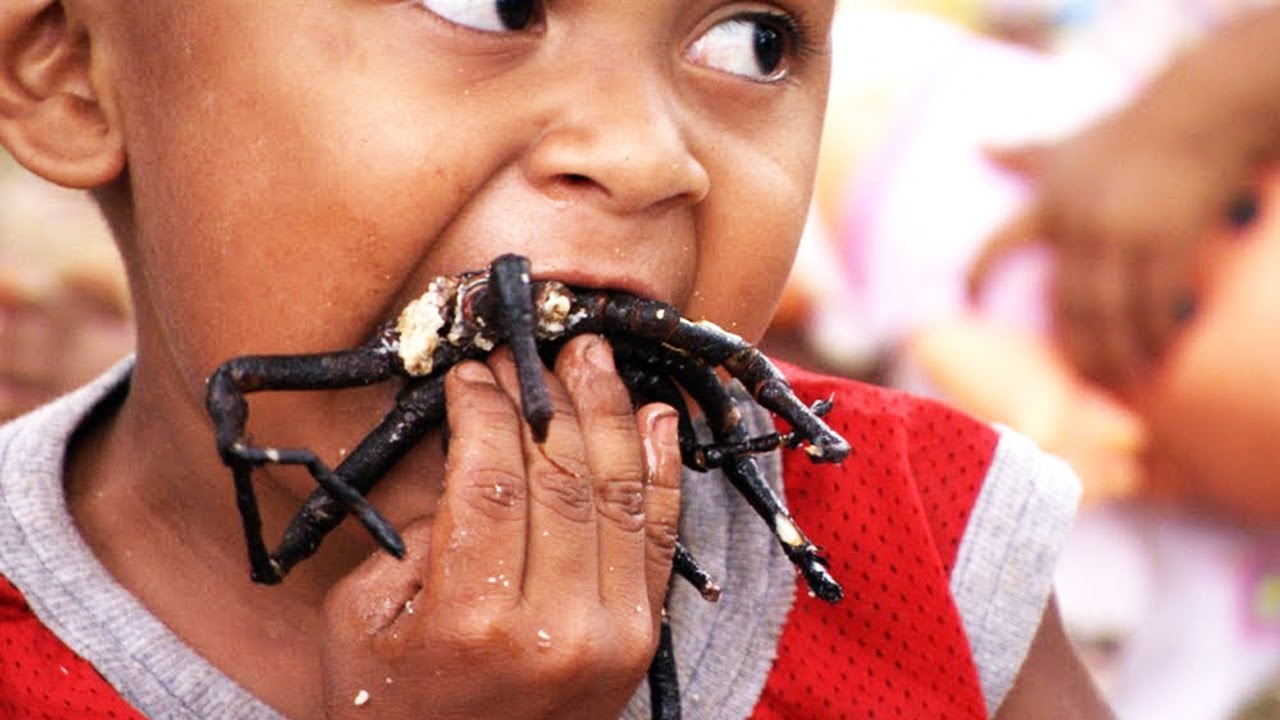Watching reruns of Andrew Zimmern’s popular show “Bizarre Foods” made me conjure a list of some of the most peculiar delicacies around the world and what they taste like, according to the testimonies of those who lived to tell the tale.
I’m an adventurous eater myself but I don’t think I’d be able to stomach most of the foods listed down here.
Fried tarantula
Cambodia

These spiders are treated like any normal snack in some parts of Asia, but more commonly in Cambodia. Locals just straight up deep-fry the critters and if you’re lucky, you can get the ones that are seasoned with a little salt and garlic. According to this travel writer, it tasted “like a mouthful of cobwebs.”
Escamole
Mexico
It may look like white corn kernels from afar, but escamole is actually ant larvae. This dish is native to Central Mexico and was once considered a delicacy by the Aztecs (insect caviar, anyone?). It’s described as having a “nutty taste” and is best served alone or with guacamole and tortillas. Maybe this I can give a pass if I ever find myself in Mexico.
Witchetty Grub
Australia
Witchetty grub is the Australian term for large, white moth larvae. It’s a staple in the Aboriginal diet because of its high protein content and they can be eaten either raw or cooked. As for the taste, sources say they taste like almonds. Sigh. Hakuna Matata.
Fugu (Pufferfish)
Japan
If there’s one food that can kill you in 20 minutes, it’s fugu. Only when it’s prepared poorly, that is. Fugu contains a powerful neurotoxin called Tetrodotoxin (TTX), which is 1,200 times deadlier than cyanide. This is why only the best of the best chefs are licensed to prepare it.
Steak Tartare
France
Like the puffer fish, this dish can go from fancy to freaky in the wrong hands. Steak tartare is a kind of meat dish made from freshly ground beef or horse meat and was first served in French restaurants in the early 20th century. It basically looks like a raw patty with a raw egg yolk sitting on top. Odd, maybe. But if prepared well it can be one of the best dishes you’ll ever have.
Hákarl
Iceland
Hákarl is an Icelandic specialty that is made from a fermented shark. The Greenland shark is abundant in the icy waters of the North Atlantic and a staple of its inhabitants. Why wait for the shark to rot? Well, because eating it fresh can be poisonous. Hákarl undergoes a time-honored process which includes burying the shark in shallow sand with stones and gravel on top. After letting the meat ferment for six to 12 weeks, it is then cut into long pieces then hung up to dry for several months.
Seagull wine
Arctic Circle
When you don’t have much to work with, you’ll learn to make do with what you’ve got. And that’s exactly what the Inuits did when they made seagull wine. The recipe is pretty simple: Take a dead seagull and stuff it into a bottle and fill it with water. Let it sit under the sun until it ferments. Bottoms up!
Rat
Vietnam, China, Thailand, Laos
We’re slowly swimming towards gross territory now. In some parts of the world, rats are totally edible. You can find them on sticks or wrapped in banana leaves perfect for supper. One thing travelers can assure you though is that it does not taste like chicken at all.
Cuy
Peru
Cuy (pronounced “kwee”) is a popular Peruvian dish that is not for the faint of heart. Cuy is made with a guinea pig. Yes, those furry rodents we keep as pets and deem cuter than hamsters. However, guinea pig has been a staple in Peru for 5,000 years. They’re often cooked whole—teeth, ears, head intact—and heavily seasoned with salt and garlic to make the skin crispy. According to the locals, the taste is “sort of a cross between rabbit and chicken.”
Casu Marzu
Italy
Your love for cheese will be put to the test when you read how casu marzu is made. This cheese is native to Sardinia, Italy and is prepared in an especially putrid way: Pecorino cheese is set aside for a long time until cheese flies (piophila casei) gather and lay eggs inside. This is to make the fermentation process more advanced. As the larvae eat the rotting cheese, it passes through their bodies and the excretions give casu marzu its distinct flavor. You can eat it with or without the maggots.